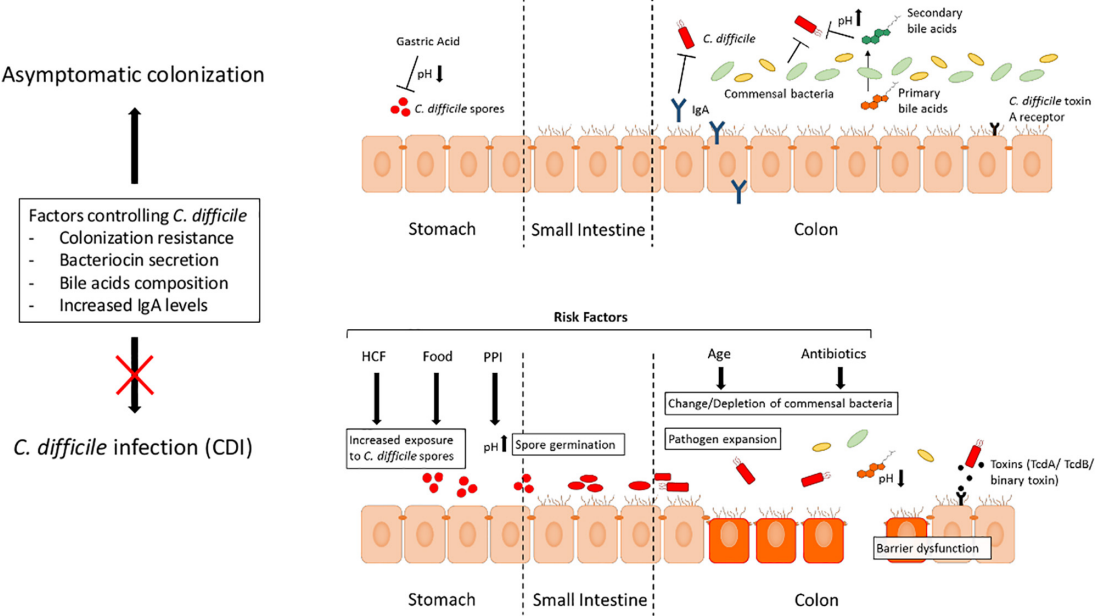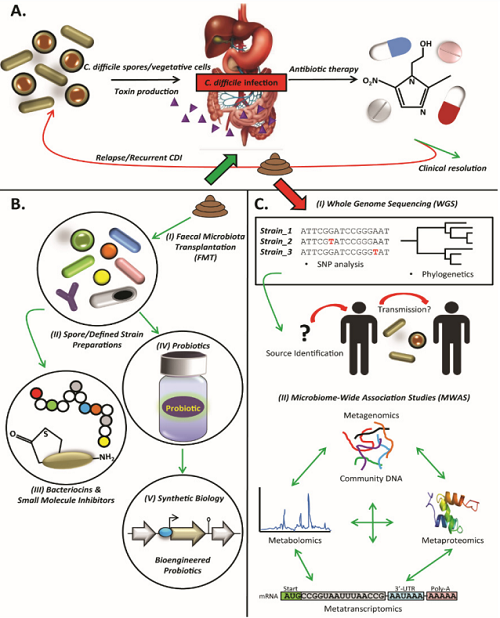Creative Biolabs is an undisputed leading provider of antibody development and generation services. Now, we provide in vitro diagnostic (IVD) antibody development services targeting various biomarkers of a wide variety of diseases. Especially, Creative Biolabs offers high-quality antibody development services targeting Clostridium difficile. Our scientists and technical experts are pleased to assist you in your studies with professional technical support.
Clostridium difficile
Clostridium difficile, also referred to as C. difficile, C. diff, or sometimes CDF/cdf, is a species of Gram-positive spore-forming bacterium, which could infect the bowels and cause diarrhoea. Clostridia, which are members of the genus Clostridium and the Clostridiaceae family, are anaerobic, motile bacteria, all-too-common in nature, and especially widespread in soil. The vegetative cells of Clostridia are rod shaped, pleomorphic, and appear in pairs or short chains. It presents optimal growth on blood agar at human temperatures under anoxic condition. C. difficile shows negative catalase and superoxide dismutase, and secretes two distinct types of toxins: enterotoxin A and cytotoxin B, both of which can disrupt cytoskeleton signal transductions in the host. When being stressed in extreme circumstances, C. difficile generate spores which can tolerate on extreme conditions, in which the active bacteria cannot survive. Although spores cannot induce infection directly, they are able to transform into the active, infectious form when ingested.
 Fig.1 Processes leading from asymptomatic C. difficile colonization to CDI.1
Fig.1 Processes leading from asymptomatic C. difficile colonization to CDI.1
Clostridium difficile Gastroenteritis
Clostridium difficile infection (CDI or C-dif) is a symptomatic infection caused by Clostridium difficile, a spore-forming bacterium. The symptoms of CDI include watery diarrhea, abdominal pain, nausea, and fever. It constitutes about 20% of antibiotic-associated diarrhea cases. Complications may involve perforation of the colon, toxic megacolon, pseudomembranous colitis, and sepsis. C. difficile is transmitted through fecal-oral route from person to person, and may be formed in the human colon. It emerges in 2–5% of the adult population. Once the spores of C. difficile are ingested, their acid-resistance permits them to get through the stomach with the spore intact. After exposure to bile acids, the spores germinate and multiply to vegetative cells in the human colon. Occasionally, antibiotic therapy for various infections is likely to cause the adverse effect of disordering the normal balance of the gut flora. In that case, C. difficile may opportunistically take a dominant place, leading to Clostridium difficile infection.
 Fig.2 Overview of C. difficile infection (CDI).2
Fig.2 Overview of C. difficile infection (CDI).2
The Main Clostridium Species Responsible for Disease in Humans
- Clostridium botulinum: produce botulinum toxin in food or wounds and lead to botulism.
- Clostridium difficile: lead to superinfection and potentially fatal pseudomembranous colitis.
- Clostridium perfringens: lead to various symptoms, including food poisoning, fasciitis, cellulitis, and gas gangrene.
- Clostridium tetani: lead to tetanus.
- Clostridium sordellii: lead to a fatal infection in exceptionally rare cases.
Diagnosis of Clostridium difficile
For the diagnosis of Clostridium difficile from stool samples, there are several main types of lab tests which include but not limited to the following methods:
- Enzyme Immunoassay. The enzyme immunoassay (EIA) test is the fastest way but always limited by its sensitivity and high false rate.
- Polymerase chain reaction. A sensitive molecular test enables rapid detection of Clostridium difficile toxin B gene with high accuracy.
- Cell cytotoxicity assay. A test used to identify the effect of Clostridium difficile toxin on human cells growth. However, this process is complex and time-consuming.
- GDH. A sensitive but nonspecific screening test for Clostridium difficile in stool samples.
- EIA. A widely used test because it is rapid, simple to perform, and relatively inexpensive.
- LAMP (loop-mediated amplification). One kind of isothermal nucleic acid amplification reactions.
Clostridium difficile Antibody Development Service
Although different lab tests have been developed thus far, IVD antibodies also play an important role in disease detection and diagnosis. Based on our extensive experience and advanced platform, Creative Biolabs now provides high-quality IVD antibody development services targeting Clostridium difficile. Besides antibody generation, Creative Biolabs also offers diagnostic immunoassay development services, including feasibility analysis, assay design, assay protocol establishment, assay optimization, and kit production.
Please feel free to contact us for more details.
References
- Schaeffler, Holger, and Anne Breitrueck. "Clostridium difficile–from colonization to infection." Frontiers in microbiology 9 (2018): 332266. Distributed under Open Access license CC BY 4.0, without modification.
- Culligan, Eamonn P., and Roy D. Sleator. "Advances in the microbiome: applications to Clostridium difficile infection." Journal of clinical medicine 5.9 (2016): 83. Distributed under Open Access license CC BY 4.0, without modification.
For Research Use Only.

